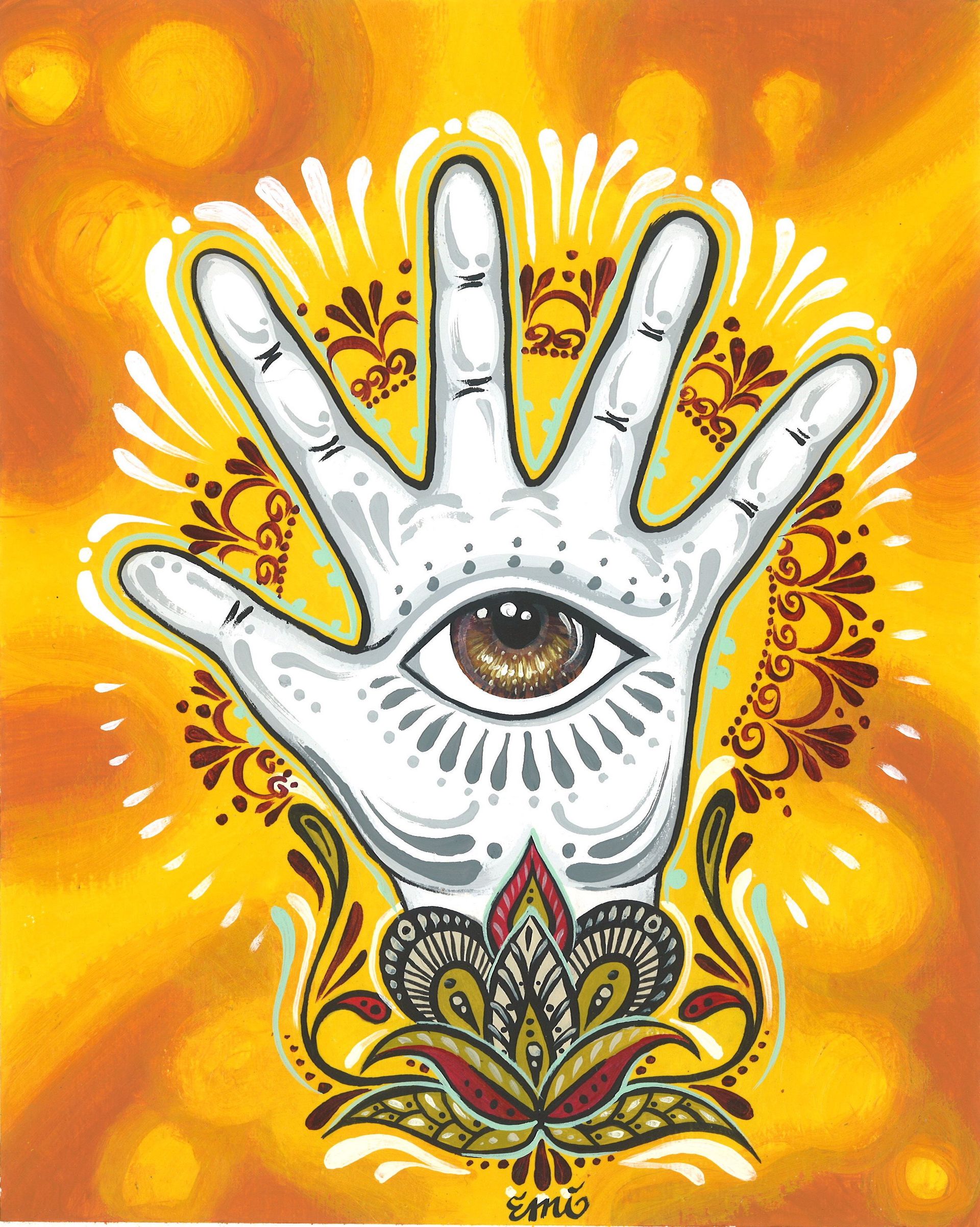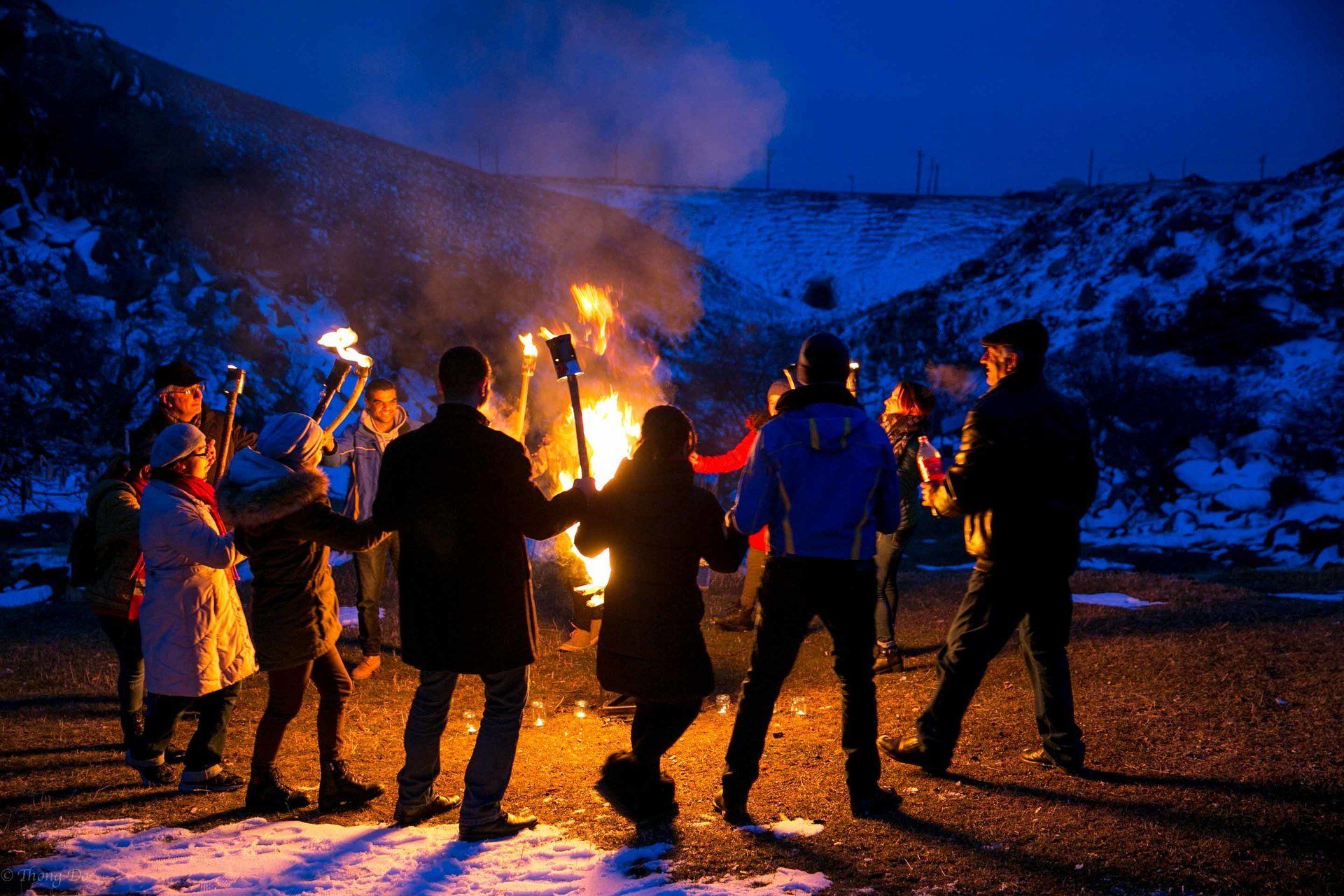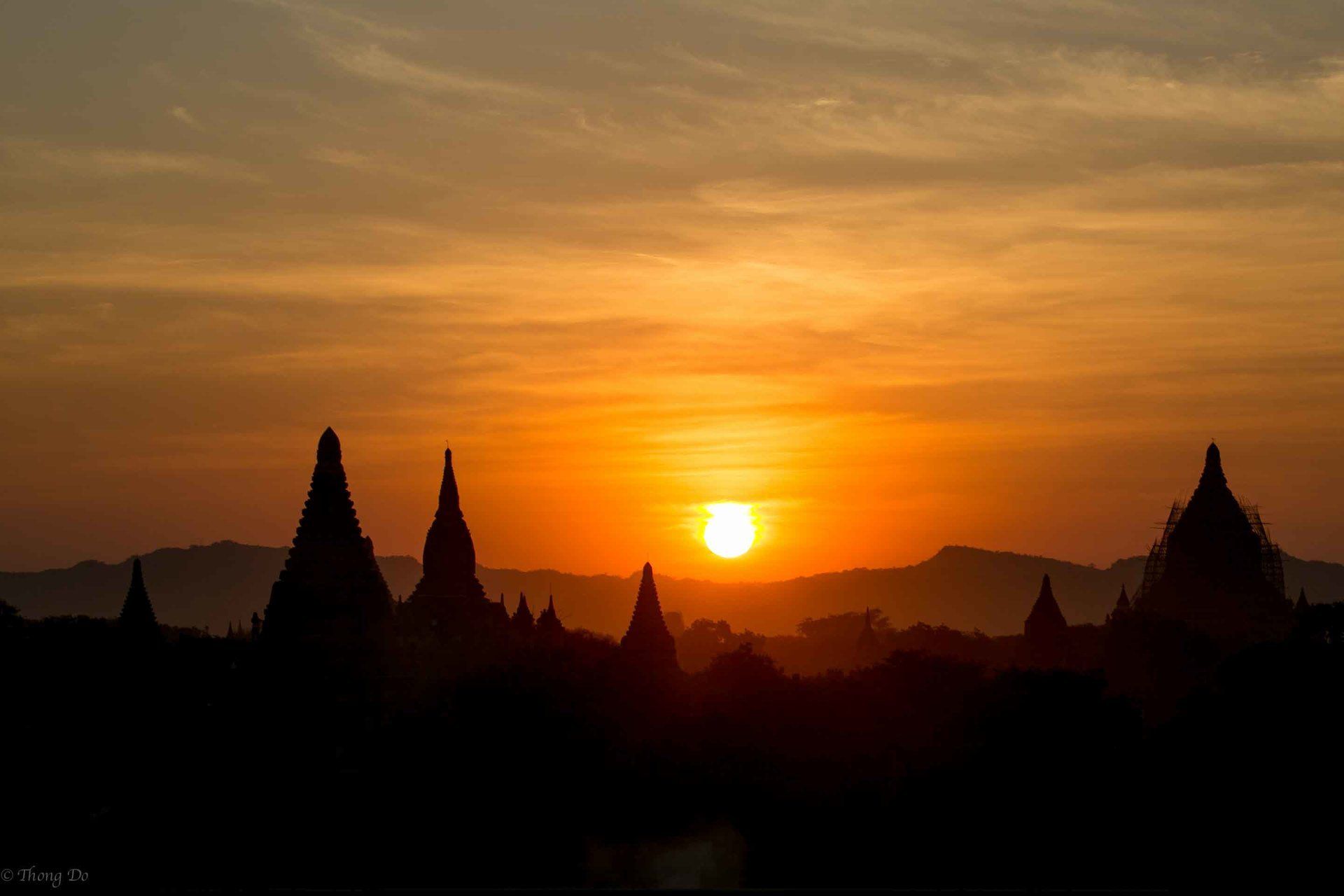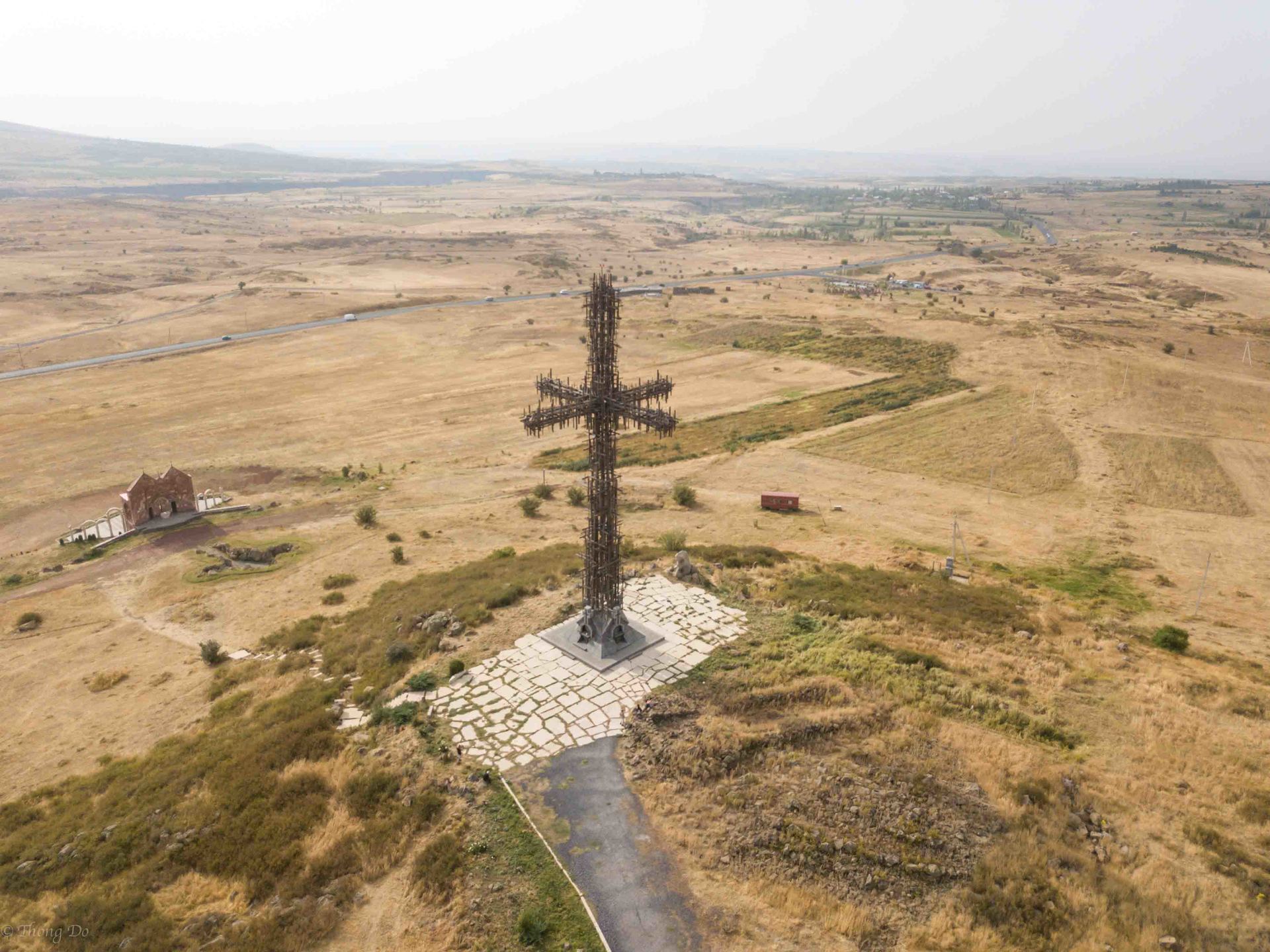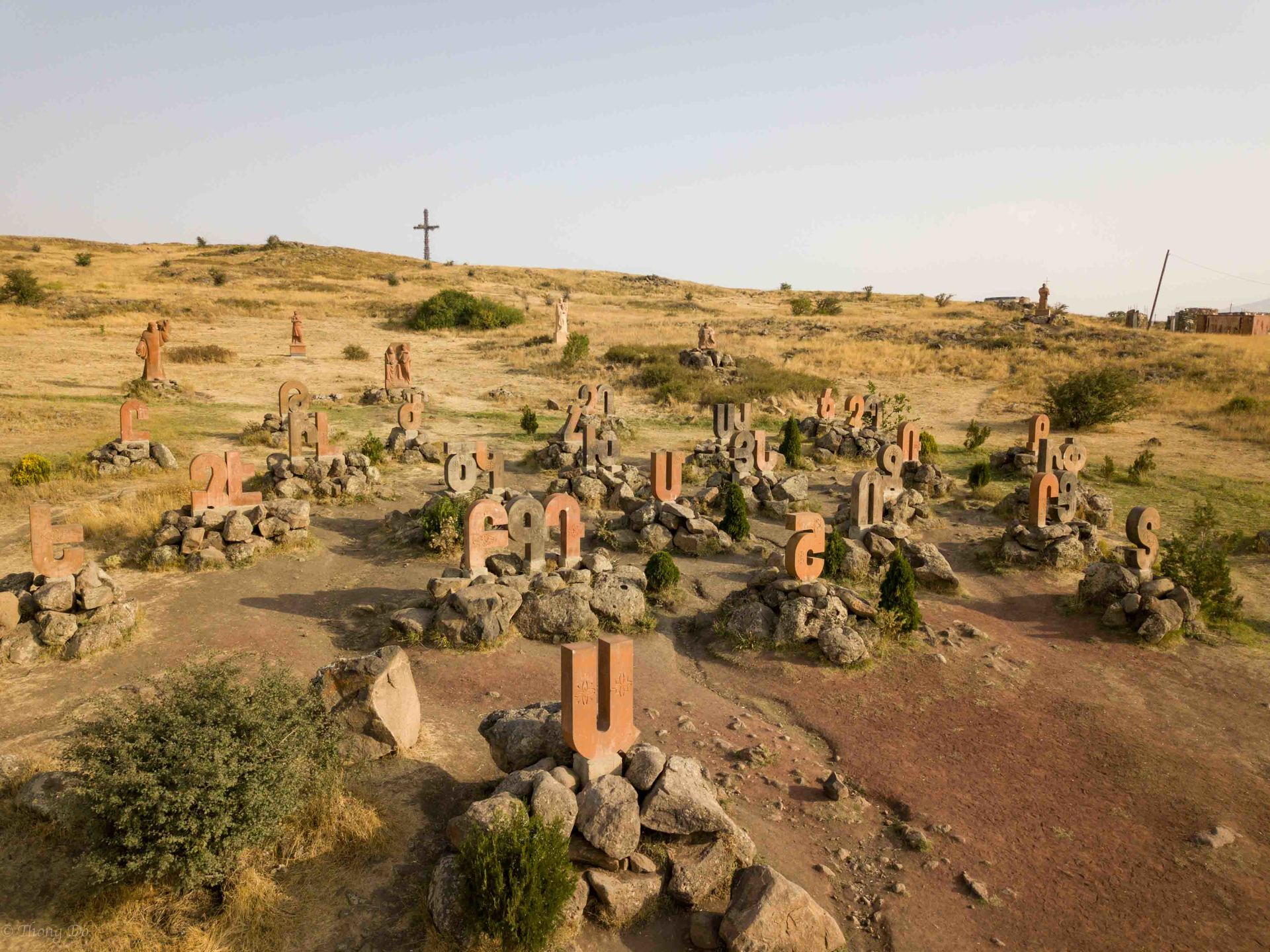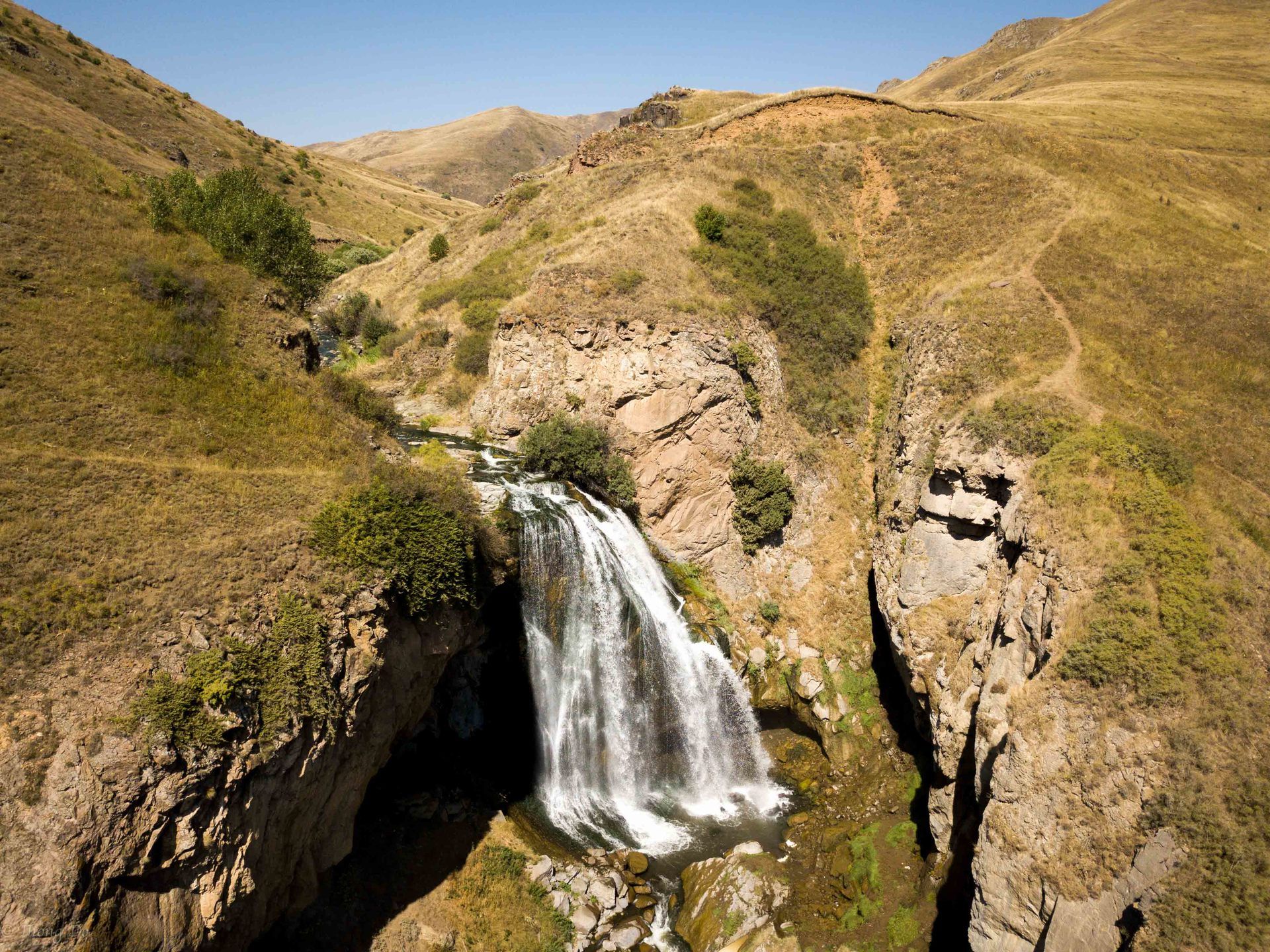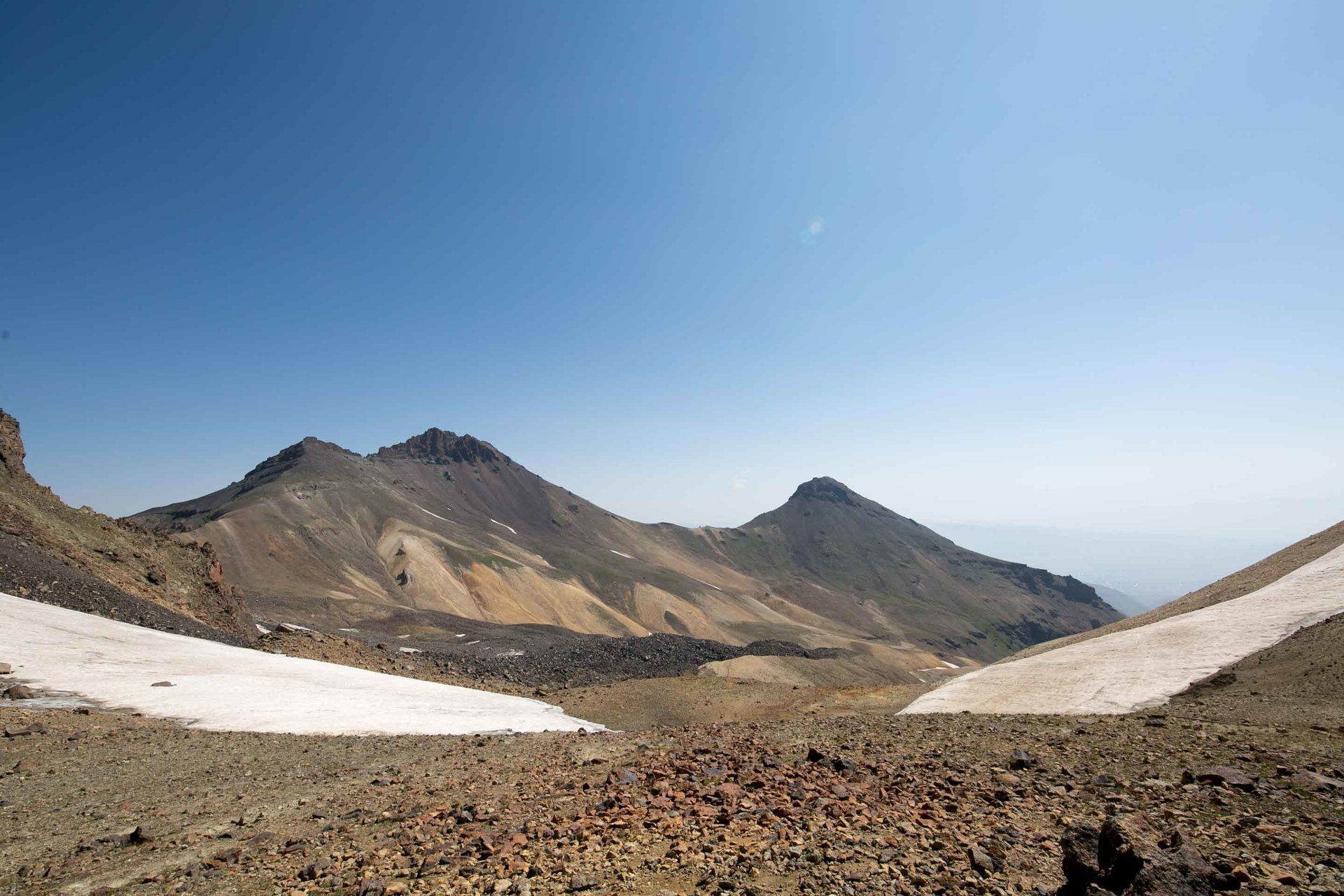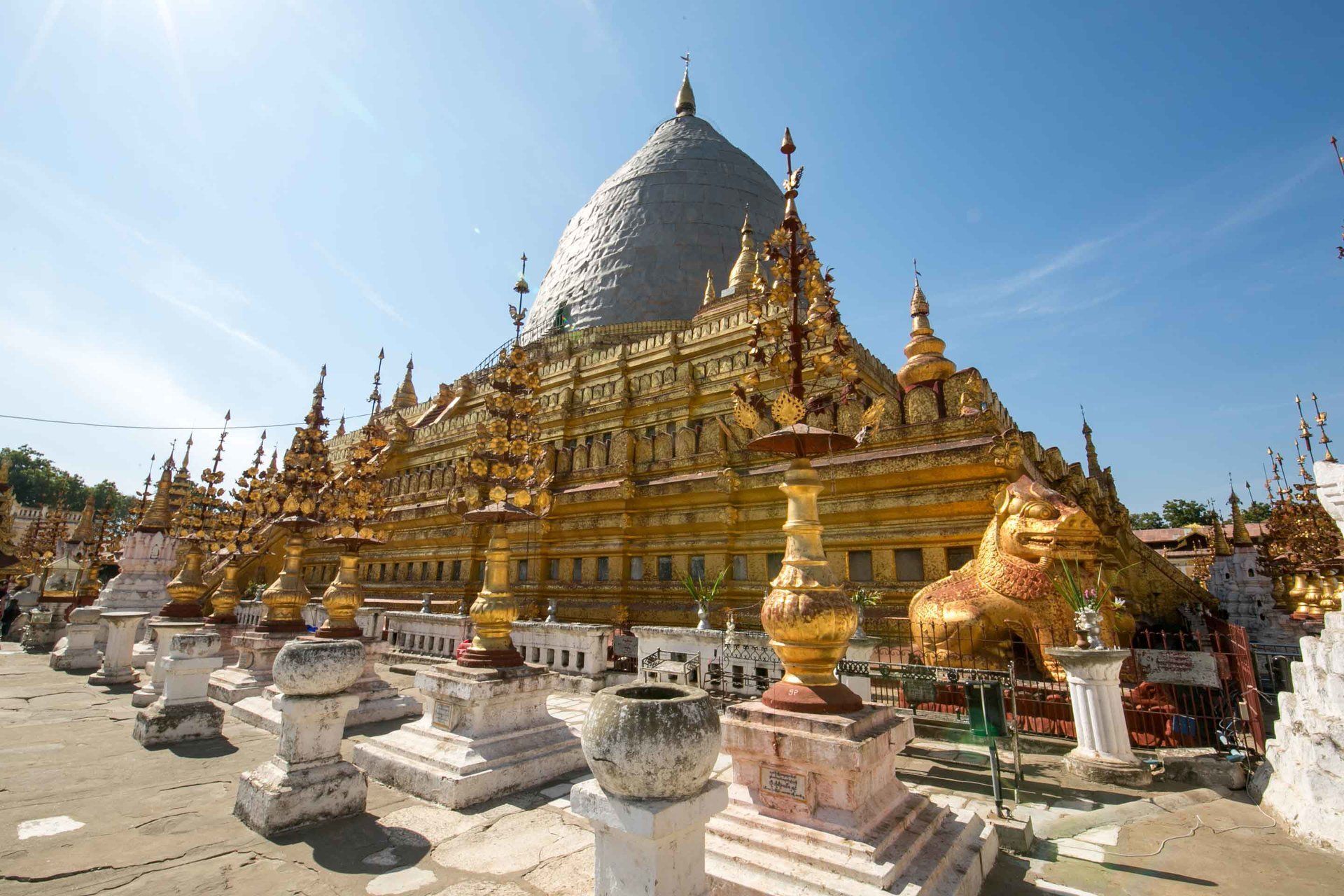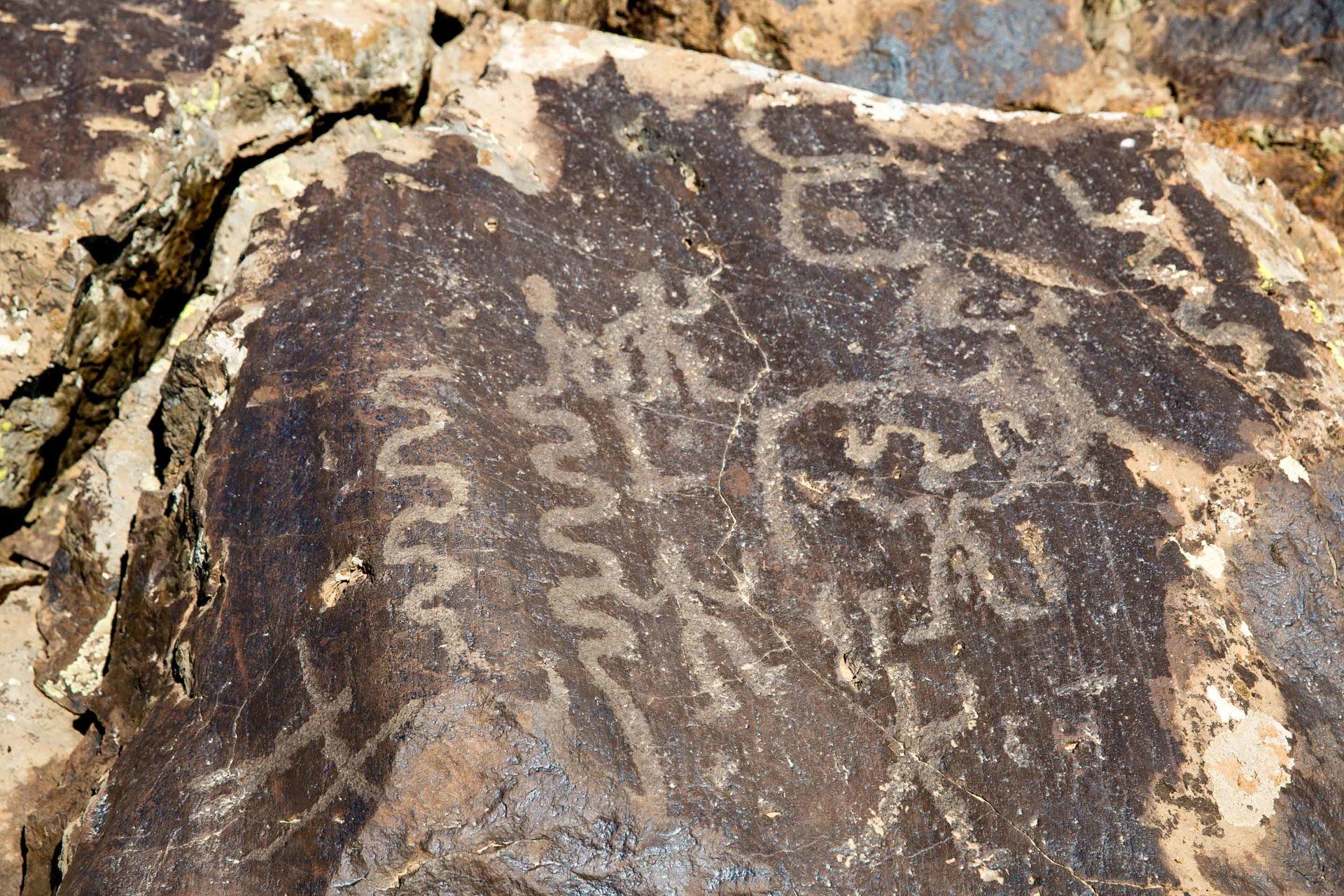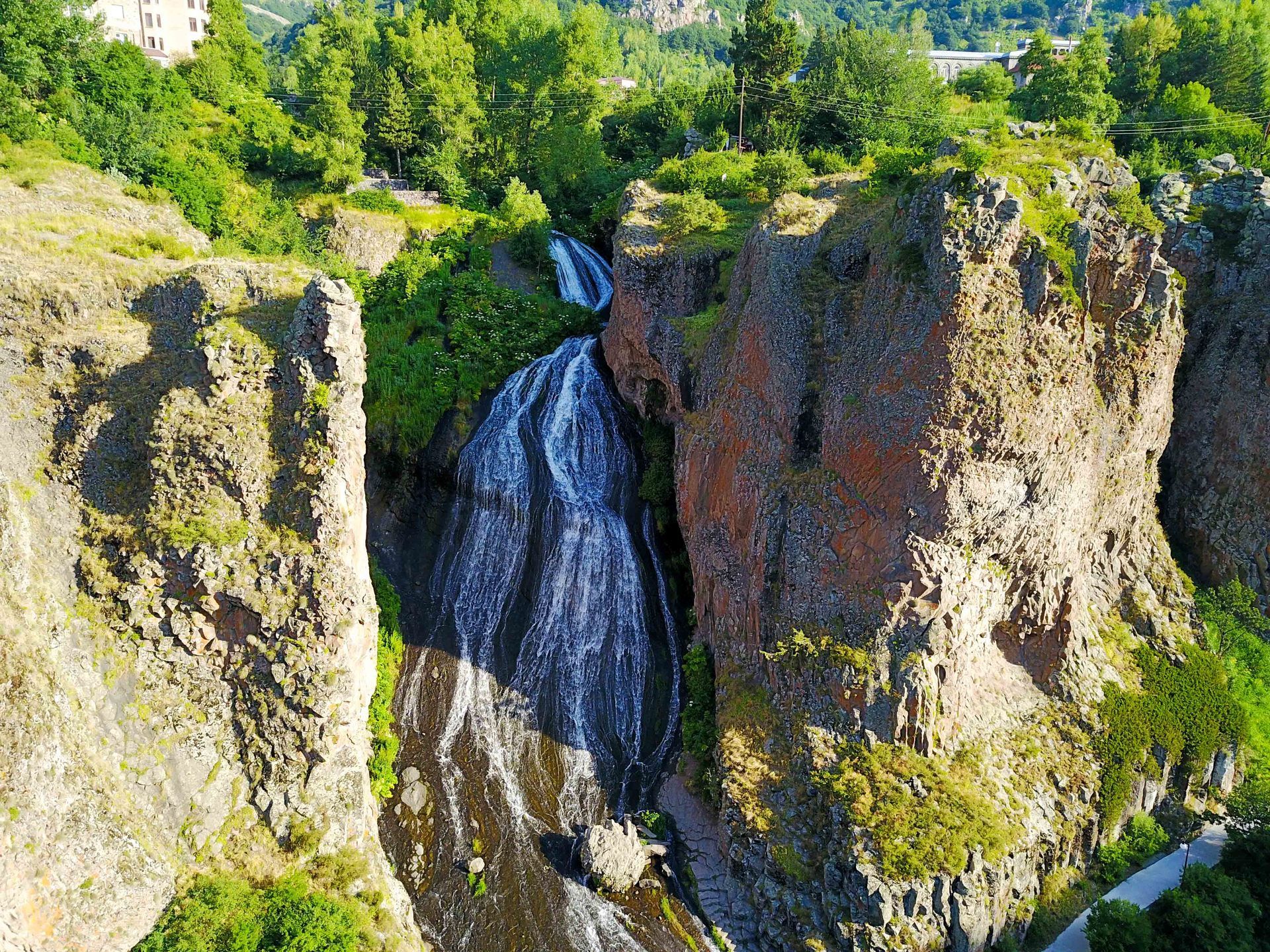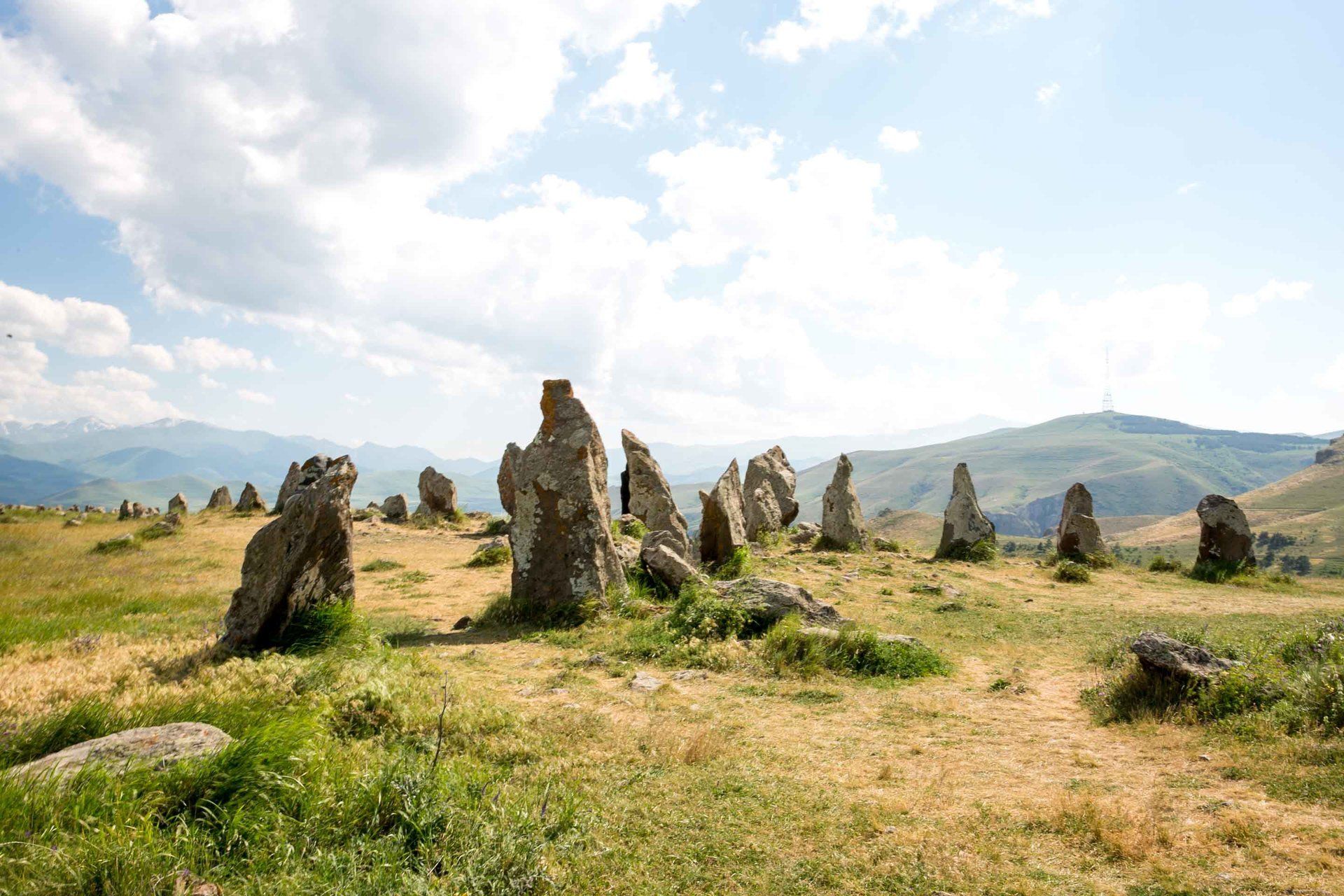Noravank Monastery
- By Thong Do
- •
- 23 Jul, 2017
- •
One of Armenia’s main attractions and must see place to experience is the Noravank Monastery located in the Vayats Dzor Province about an hour southeast of Yerevan. Translated as “new monastery” this was founded in 1205 AD by Bishop Hovhannes, the former abbot from Vahanavank Church located near the present day city of Kapan. Situated in a narrow gorge by the Amaghu River, Noravank Monastery is next to the city of Yegheghnadzor and is surrounded by gorgeous red rocks and surrounding trees. One of the more iconic sights in Armenia, the medieval architecture is what makes it so unique and worth visiting.
I had the good fortune of visiting Noravank on 3 different occasions. The first time I saw it on a pilgrimage with my organization during the springtime of 2017. The scenery was not that great because there was overcast and no green in the background. My second time was during the end of spring when everything was in bloom and absolutely gorgeous. I went back for the third time during the summer time because I just recently bought a drone and wanted to get aerial pictures.

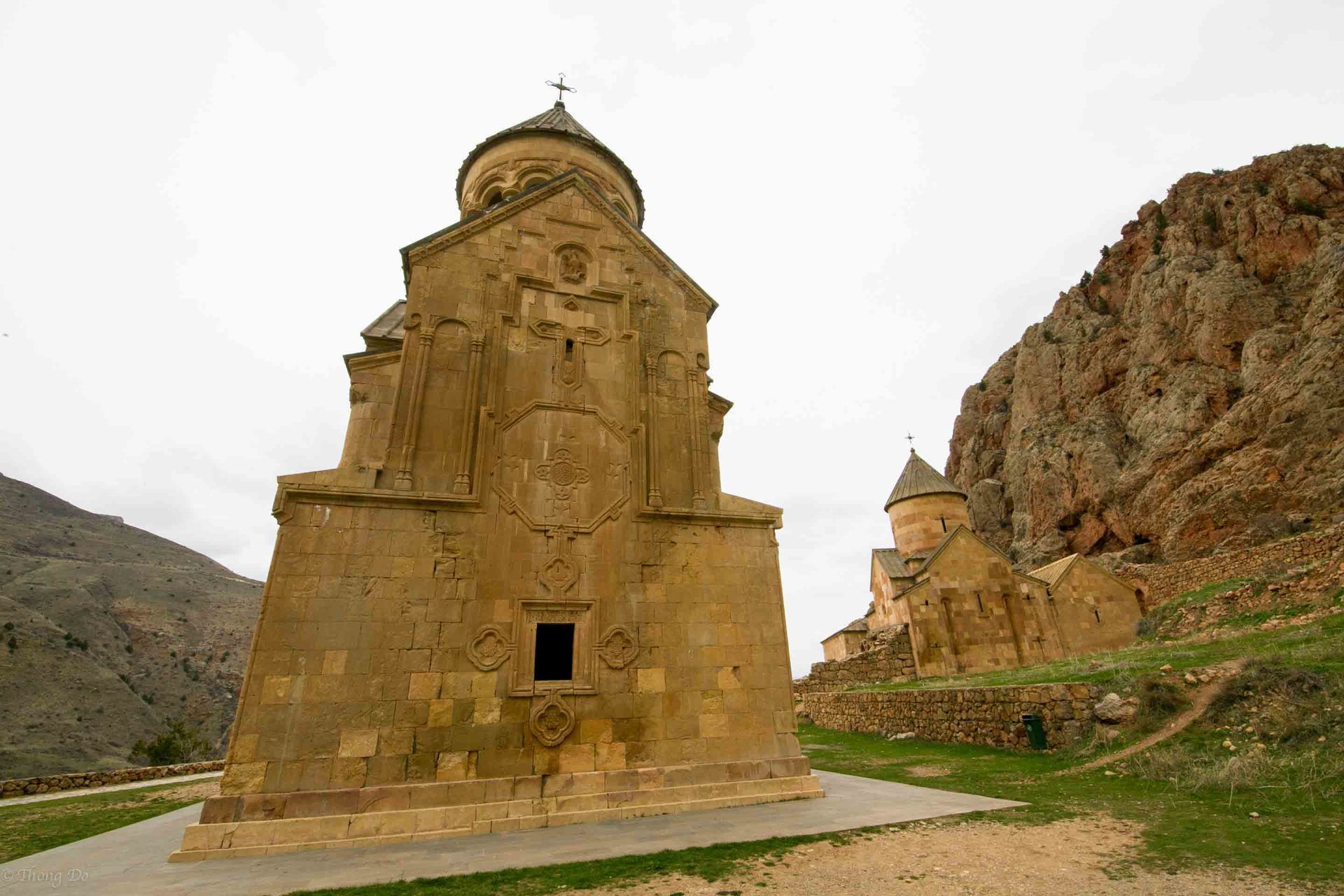
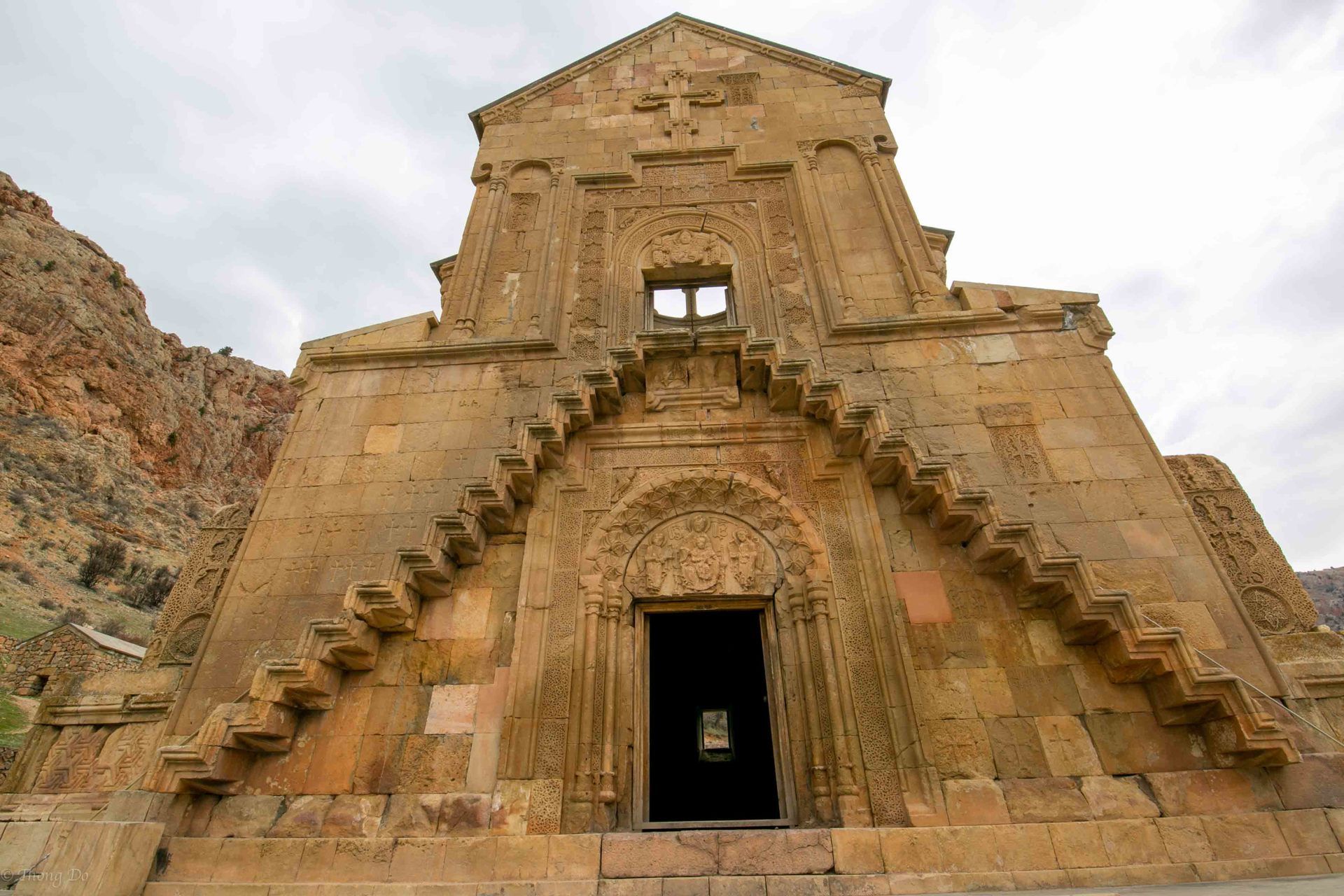
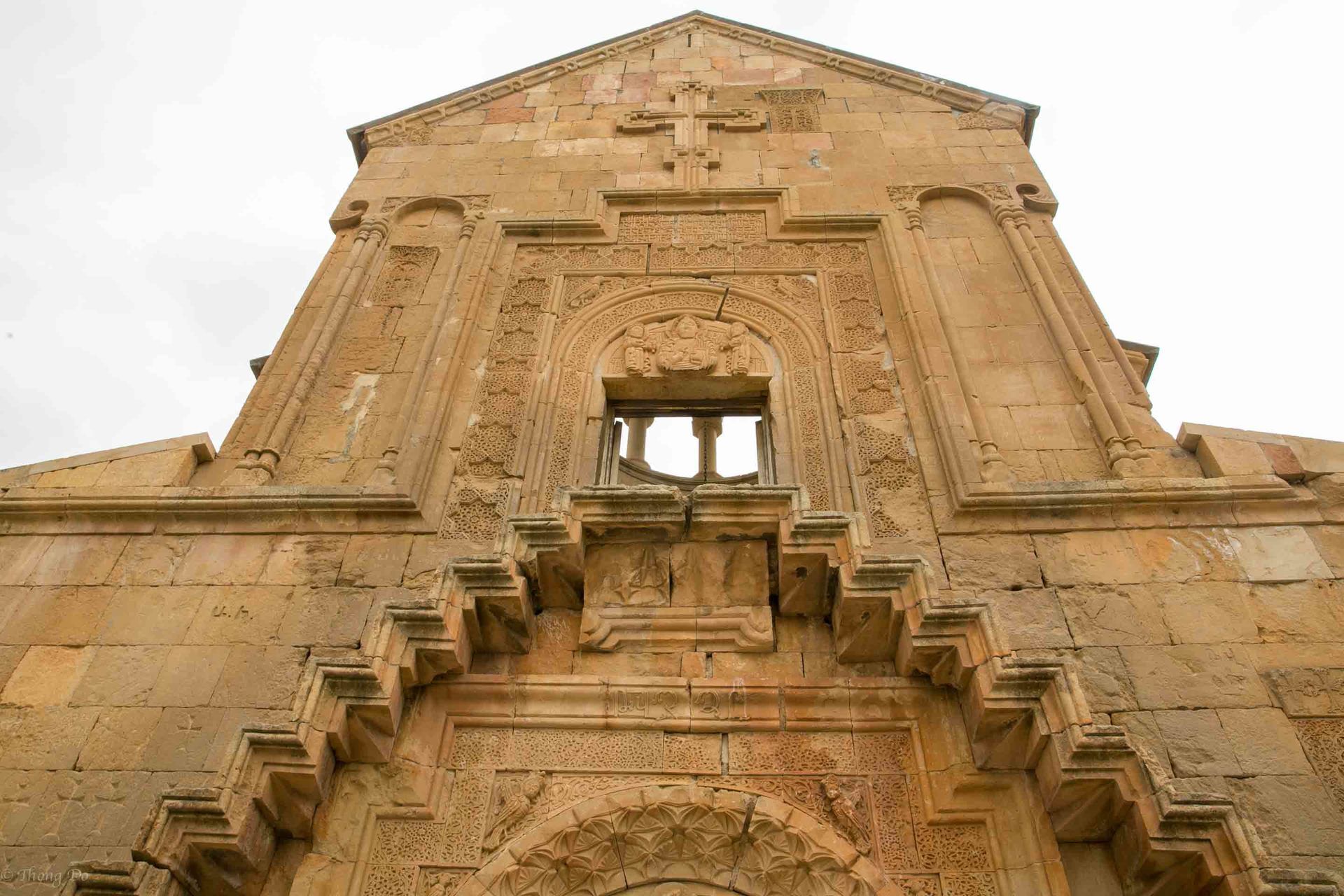
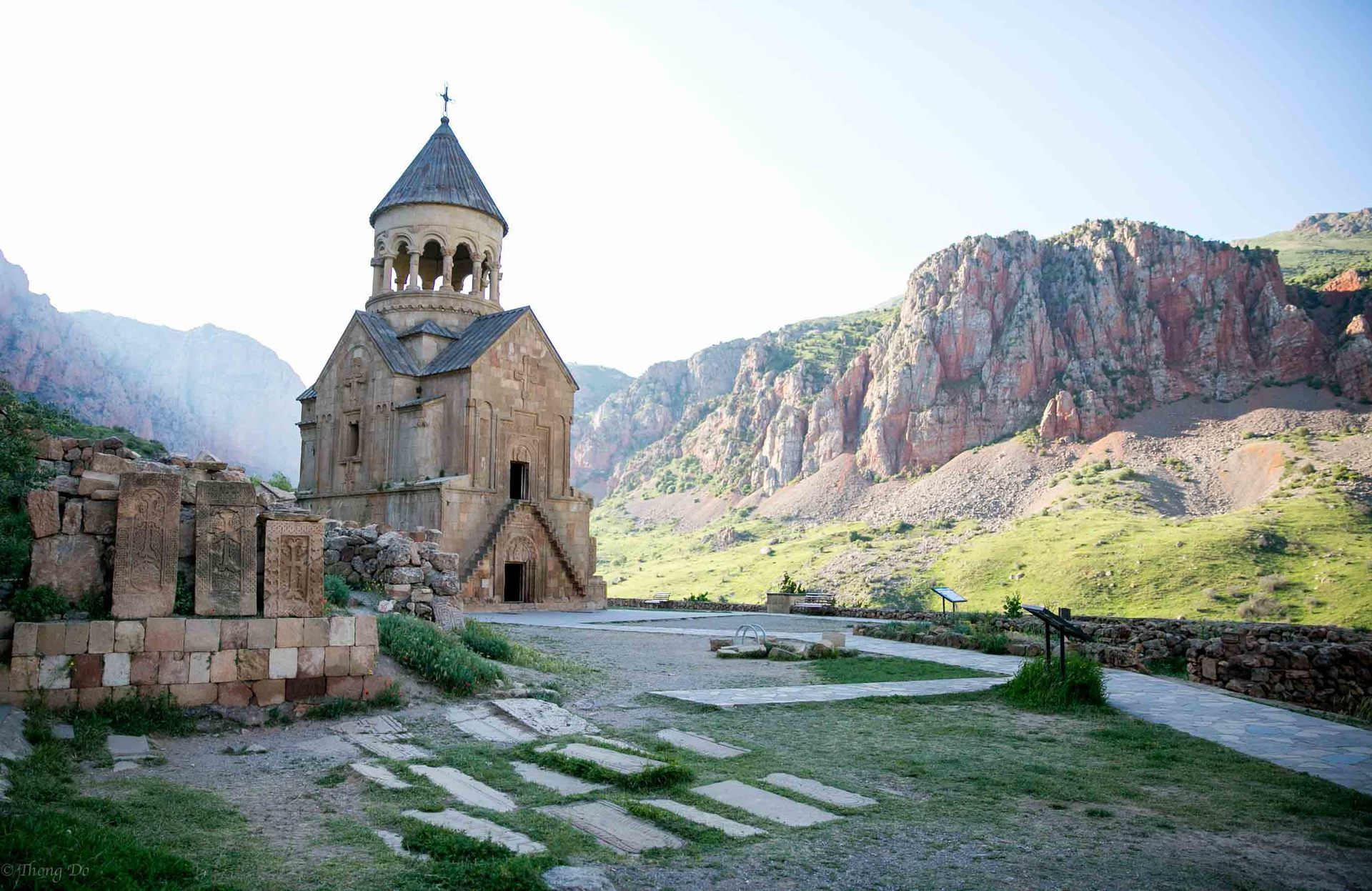
The Noravank Monastery Complex consists of the St. Astvatsatsin church, St. Stepanos Nakhaveka and gavit, the St.Grigor Church and Orbelian Sepulchre, the remains of medieval apels and residential quarters and a modern office and dining hall. The semicircular tympanum of the entrance has a relief with the icon of the Blessed Virgin with the infant Christ and two saints (Peter and Paul) facing her. The saints are pictured with narrow eyes so as to please the Mongols who conquered Armenia in 1236 and thus preserve the monastery from destruction.
The main structure and the iconic site at Noravank Monastery is the Surb Astvatsatsin that was built in 1339. In Armenian it translates to Holy Mother of God and sometimes referred to as Burtelashen or Burtel’s work in honor of the Prince Burtel Orbelian, the royal who financed it during his reign in the Syunik province in the early/mid 14th century. The Surb Astvatsatsin also has three levels and considered a masterpiece by the renowned artist/sculptor/architect Momik. Momik’s grave lies next to the church on its south side. He began his career as an artist of manuscripts in Kilikia where Crusaders exposed him to the late gothic style art. It was in 1299 that Bishop Stepanos Orbelian brought Momik to Vayots Dzor, where quickly became accomplished and celebrity, particularly for his sculptural work, creating khachkars (Armenian cross stones) that are considered the greatest and most respected of it’s era.
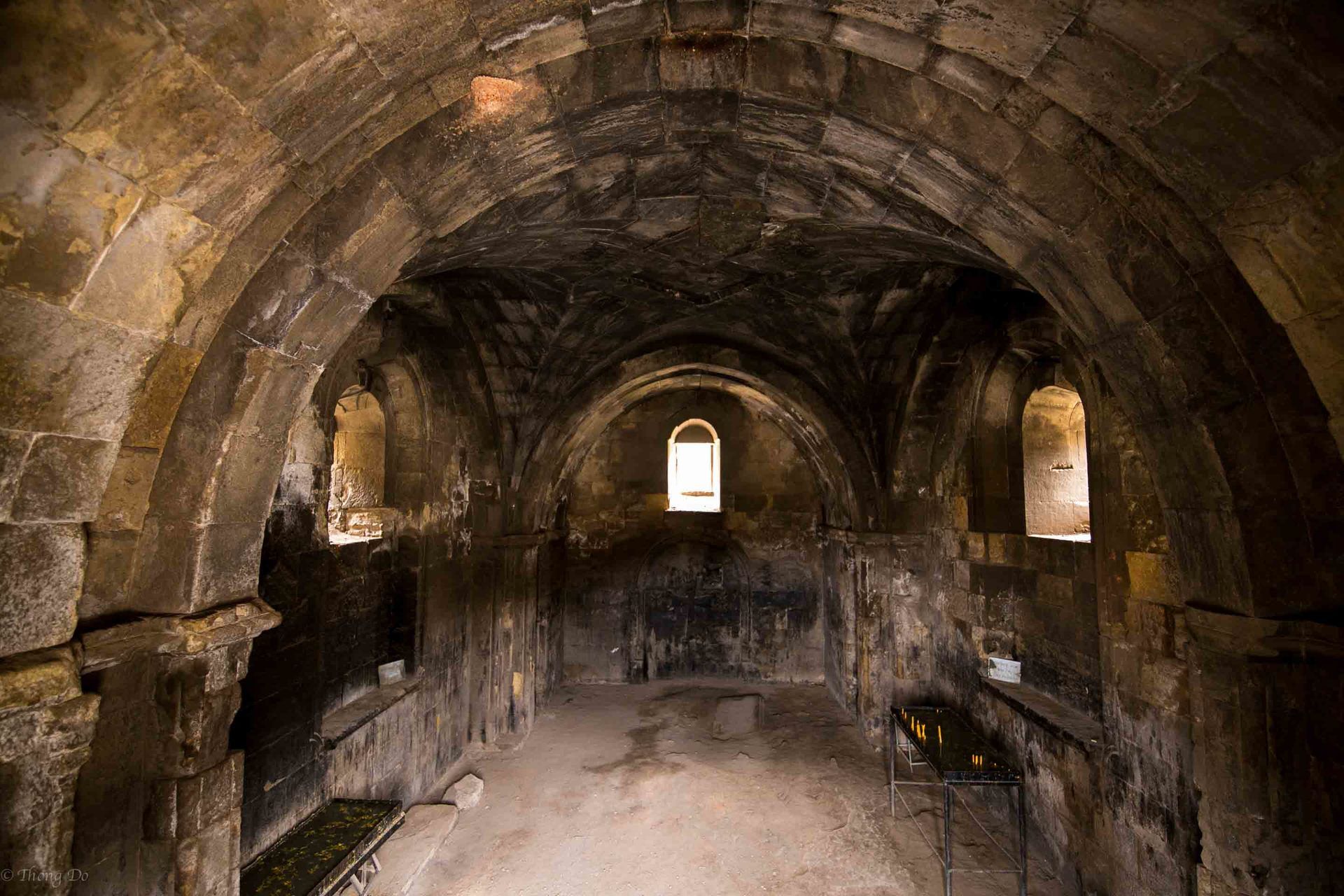
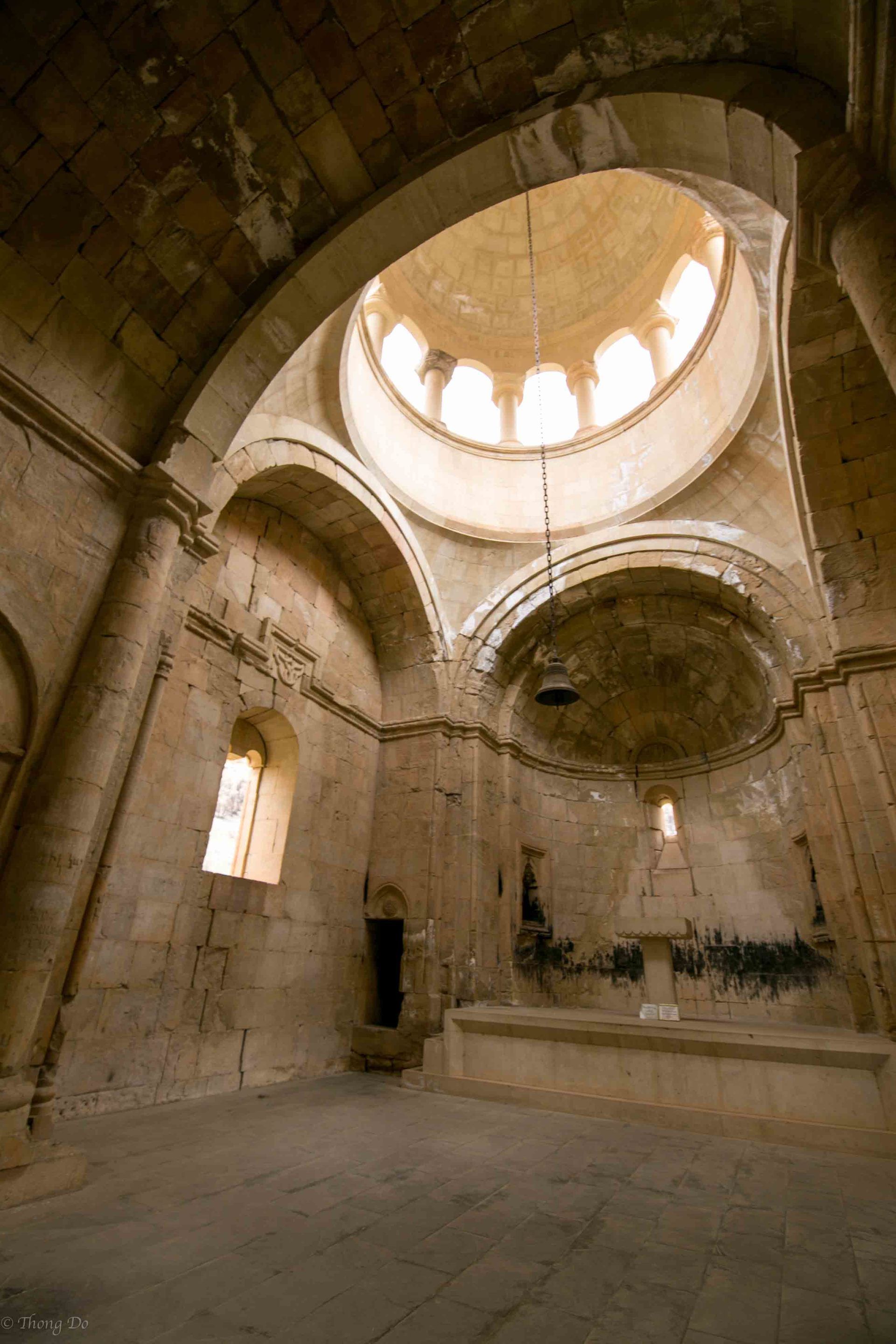
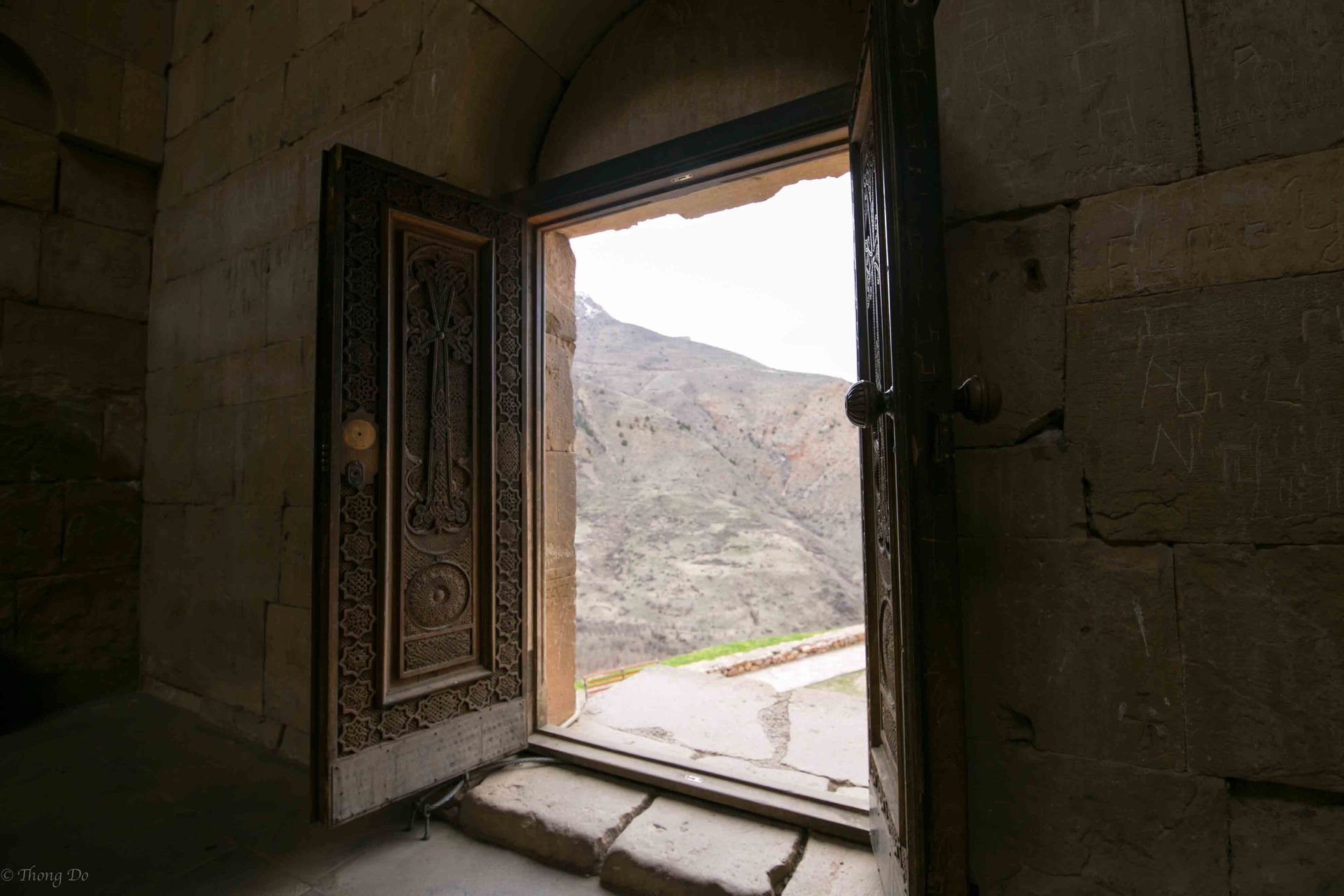
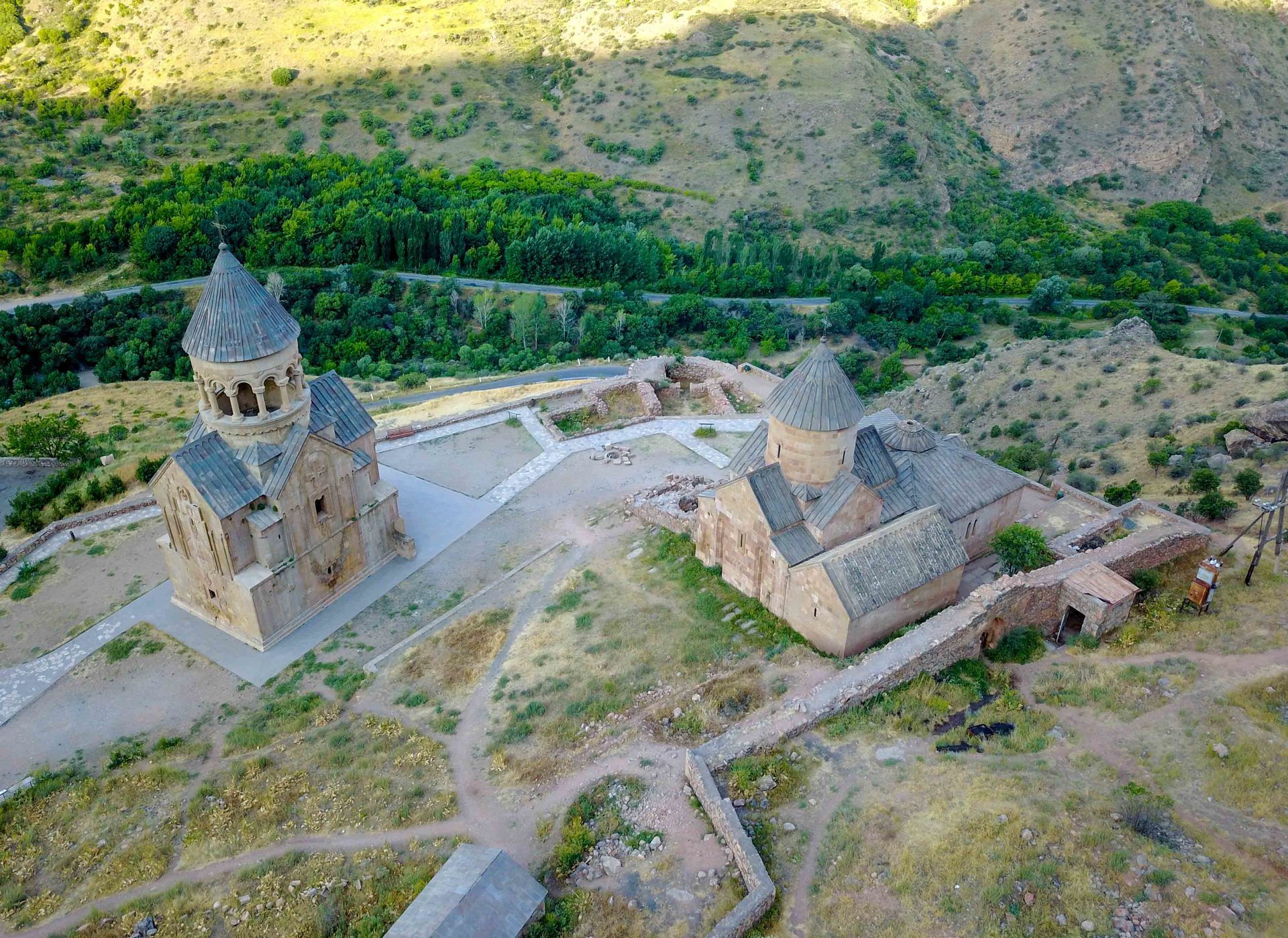
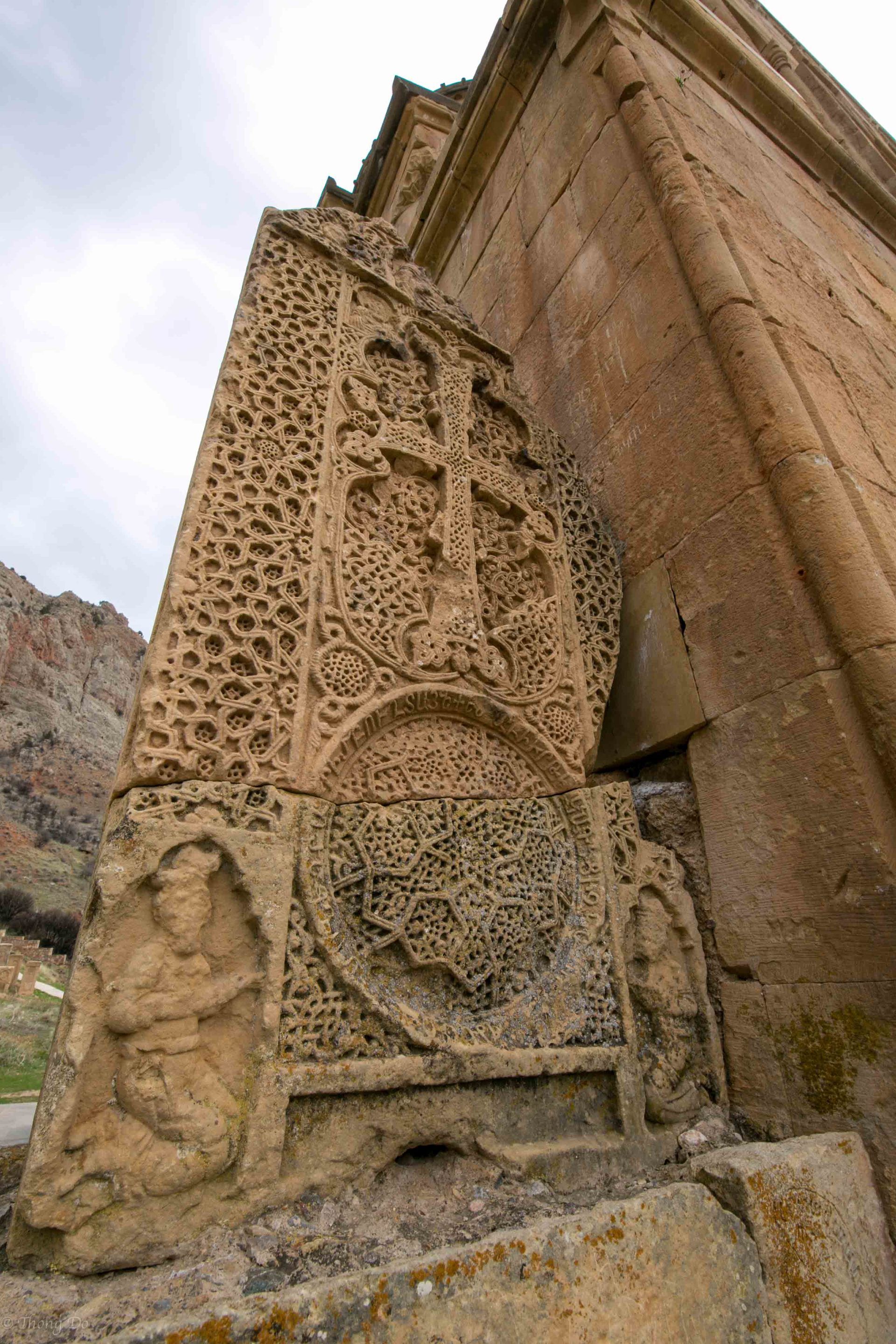
The first floor was designed for the royal family tombs, marked by elaborate khachkars and votive plates. You are able to go inside since there are no restrictions here. Most people will go and light a candle here and say a prayer even though this is not the main church. The main church is Surb Karapat or St. John the Baptist just meters away.
To get to the second floor you must take either of the narrow iconic stairs. When I say narrow, I mean narrow! Luckily, there is a rope attached to the walls for support. Just above the entrance you’ll see carved an effigy of Christ surrounded by two angels. Take a seat on the top of the stairs and overlook the mountains and forests. It’s beautiful and worth the view even if you’re afraid of heights like me. Once you enter you’ll immediately see the window of the left hand side and the beautiful dome supported by an open-air rotunda. The open design lets in the perfect amount of light. Due to the popularity of this area, it might get crowded since so many people are trying to take their pictures here.
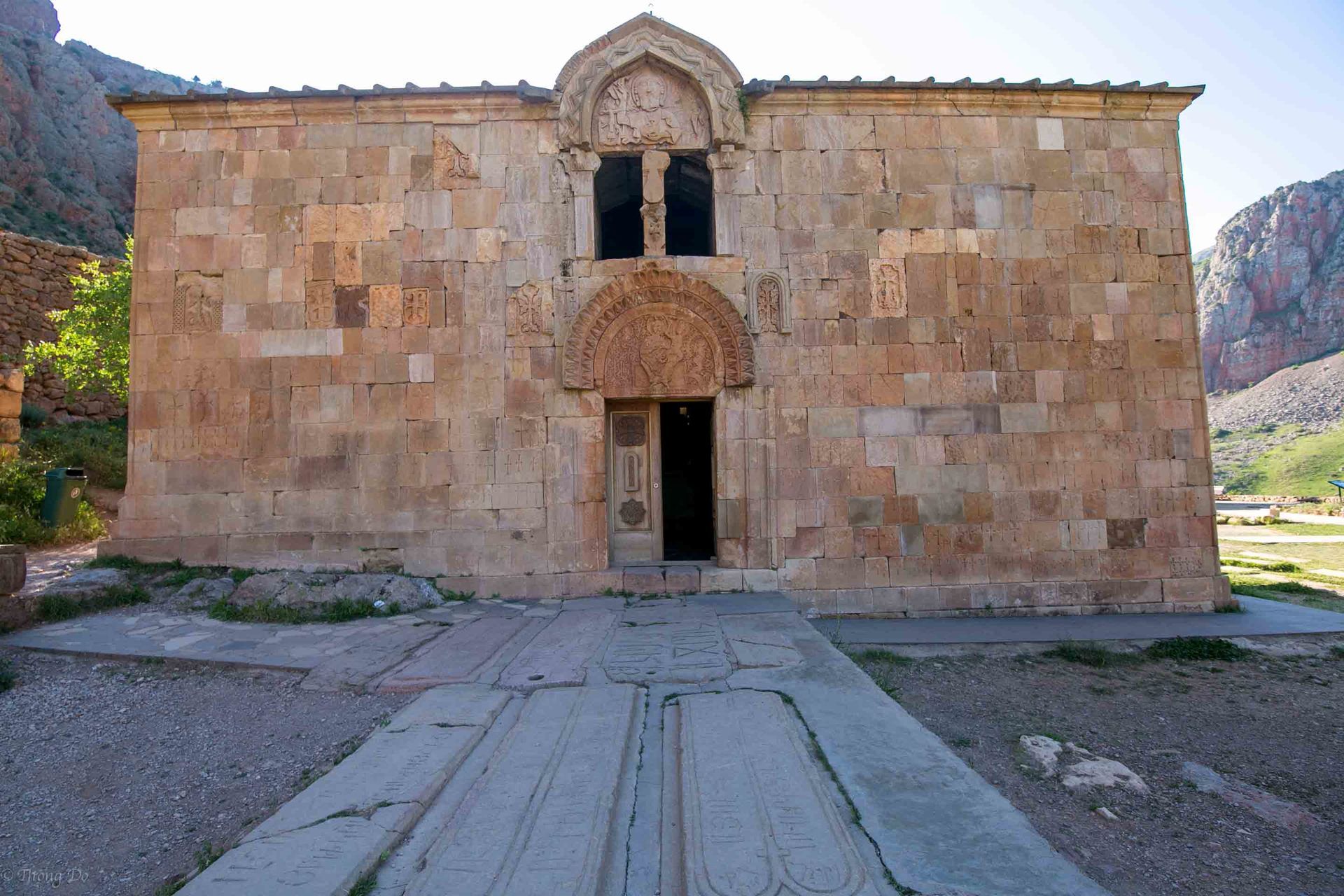

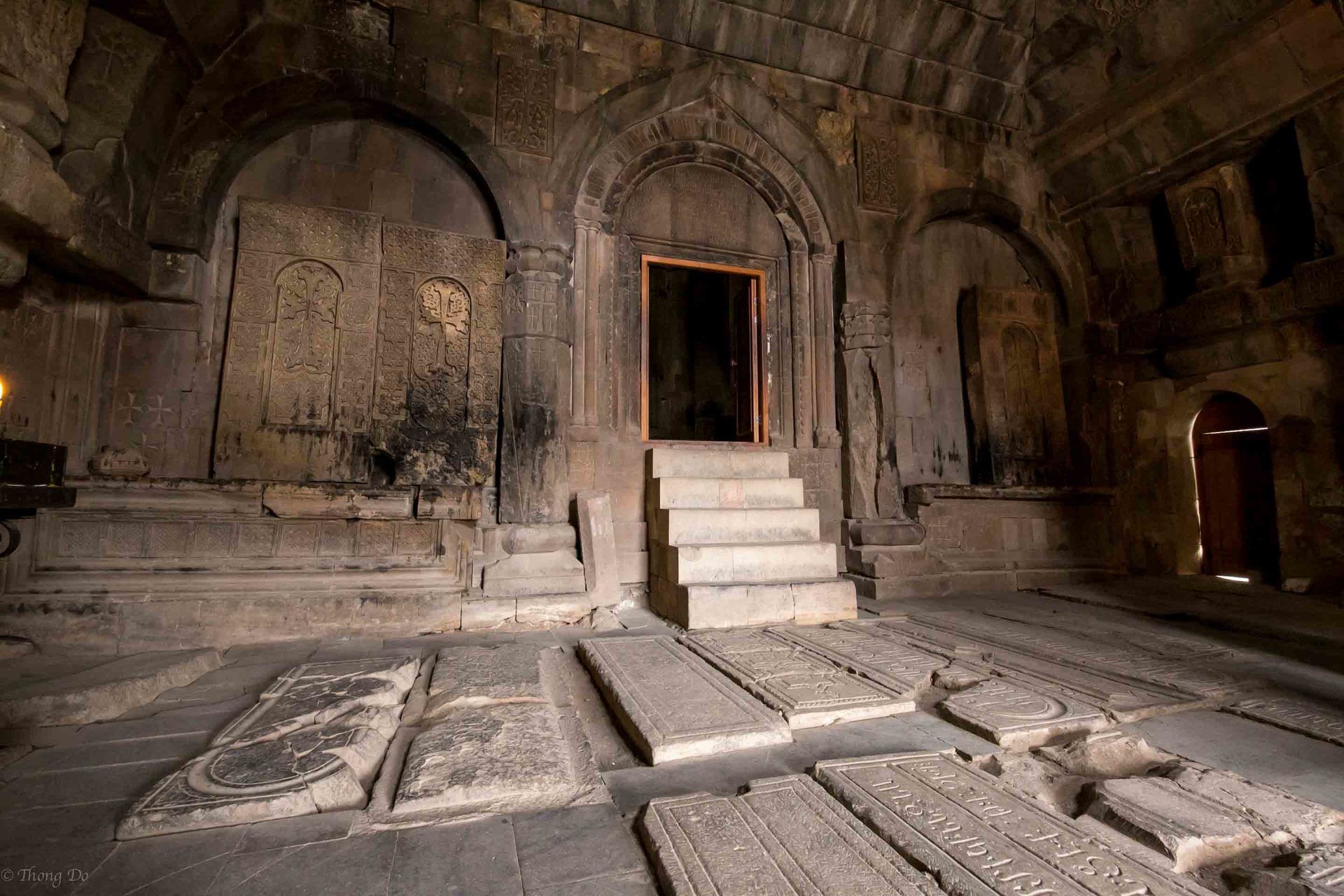
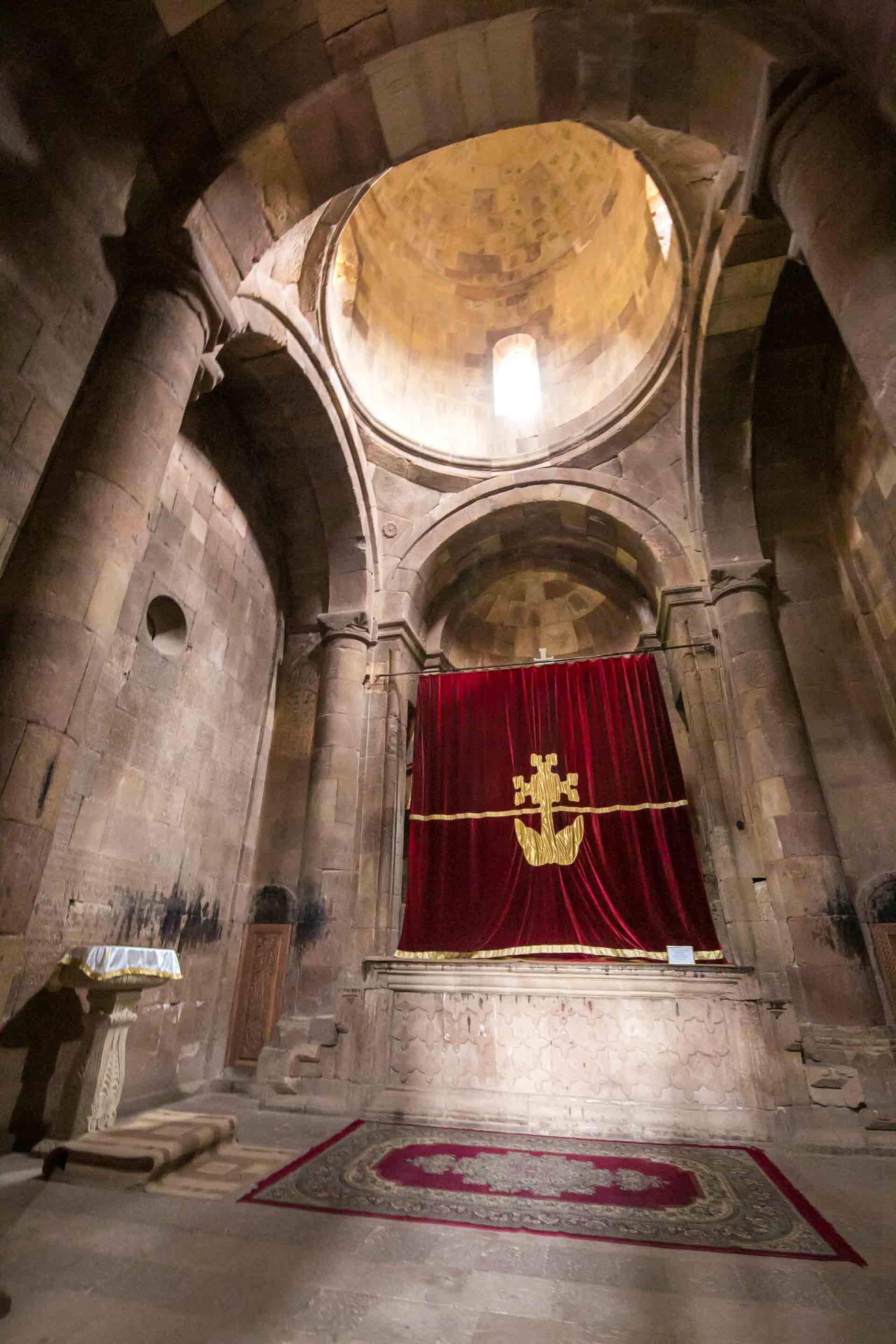

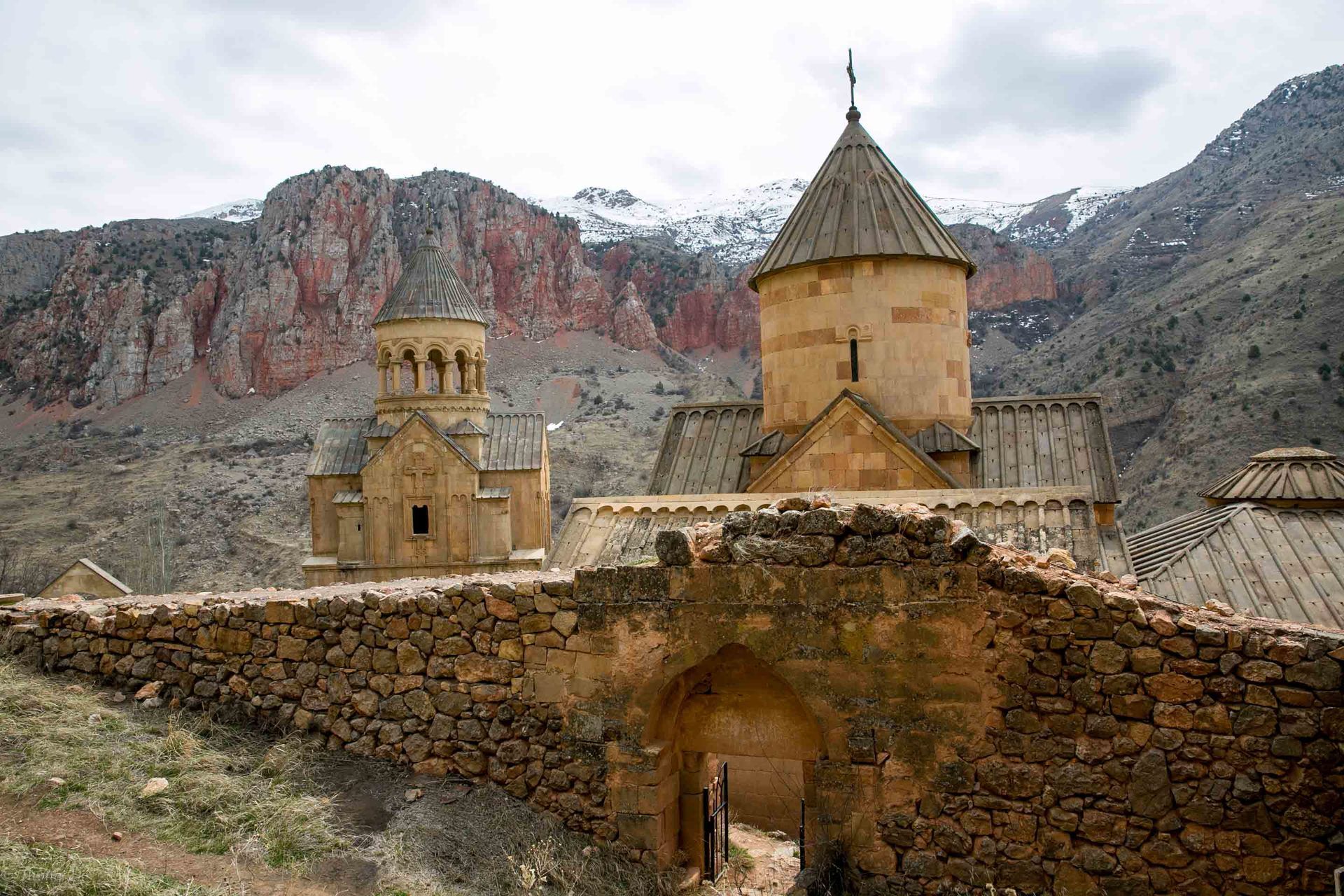
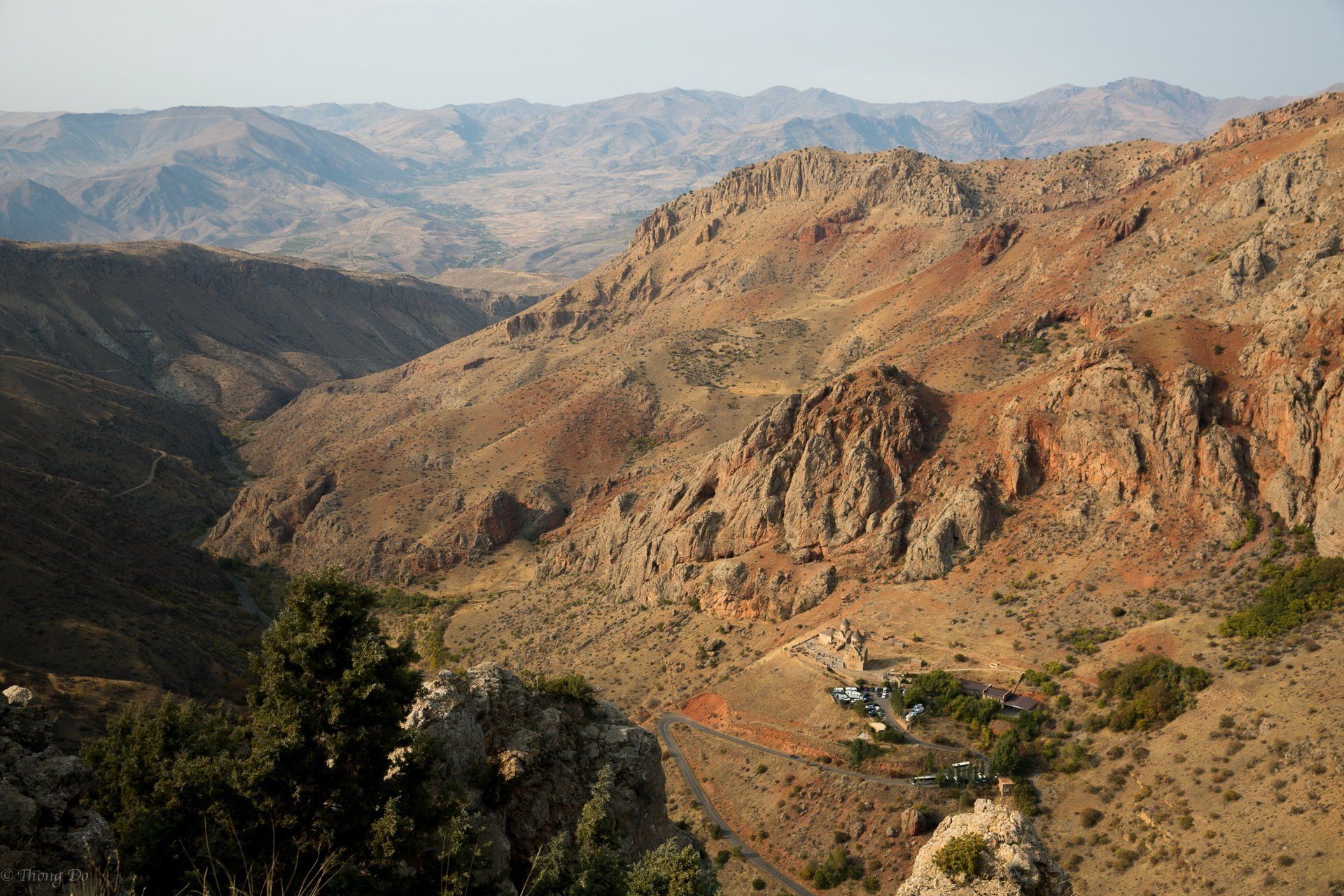
The main church is the St. Stepanos Nakhaveka and it was built in 1227 by the decree of Prince Liparit Orbelian. There have been a few earthquakes throughout its history so it’s been rebuilt few times. The latest renovations were done in the 1980s and completed in 2001. The church itself is a domed cruciform. The second level chambers were used by monks for prayer, study, to create manuscripts while the lower chambers were used as shrines, vestry, and to keep the church treasury.
As you walk towards the main entrance you’ll pass some more khachkars and being greeted by more intricate carvings just above the entrance door. Once inside, pay close attention to the details in the roof, the graves on the floors, as well the writings on the wall. Walk up to the upper chamber and observe the small and humble chapel inside. There are also tiny staircases that take you to tiny prayer/meditation rooms too.
The other buildings are not much to look at but towards the other side are numerous khachkars that are intricately made and unique to look at. If you’re up for a small hike there are small trails towards the mountains that will take you to some incredible vista points. I took those to get some of the pictures I took. Make sure you have the proper foot ware since it is a decent incline.
Overall, it shouldn’t take you more than an hour to thoroughly examine and appreciate the beauty of this Armenian gem. It has a unique history and is a cultural treasure that Armenians are particularly proud of. Only an hour away from Yerevan, it’s a must see attraction if you’re looking for something to see while visiting Armenia.
Happy traveling.
